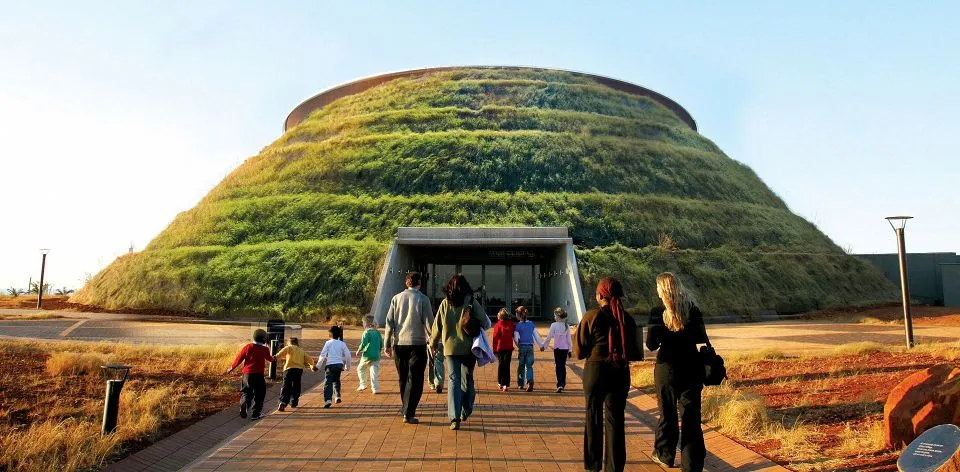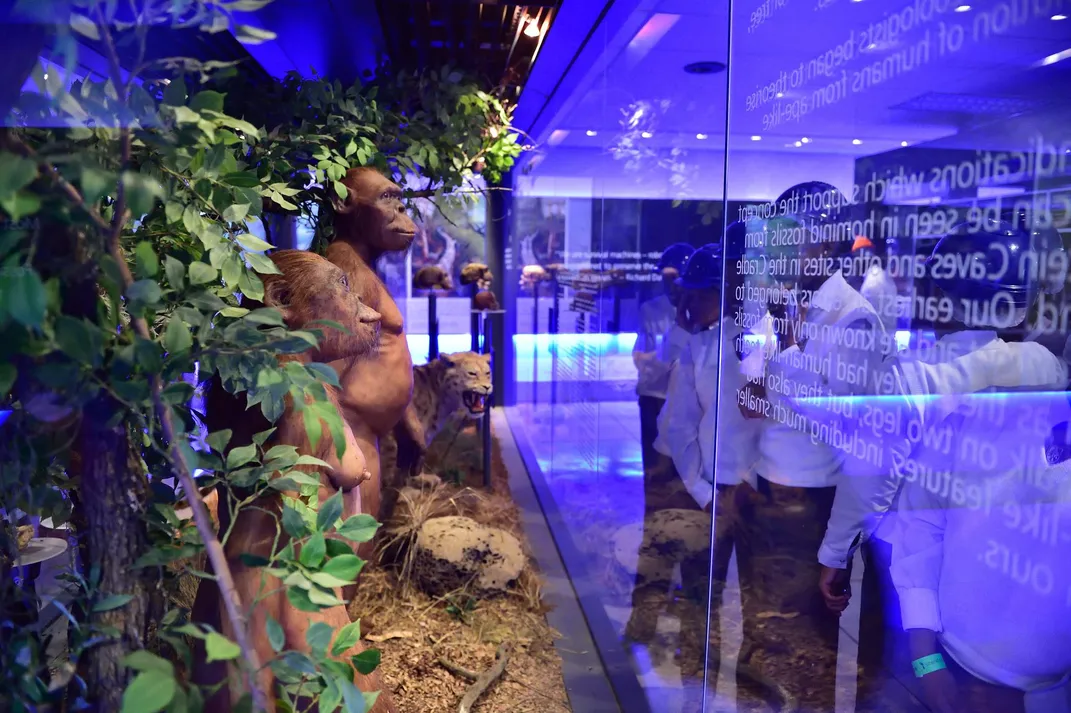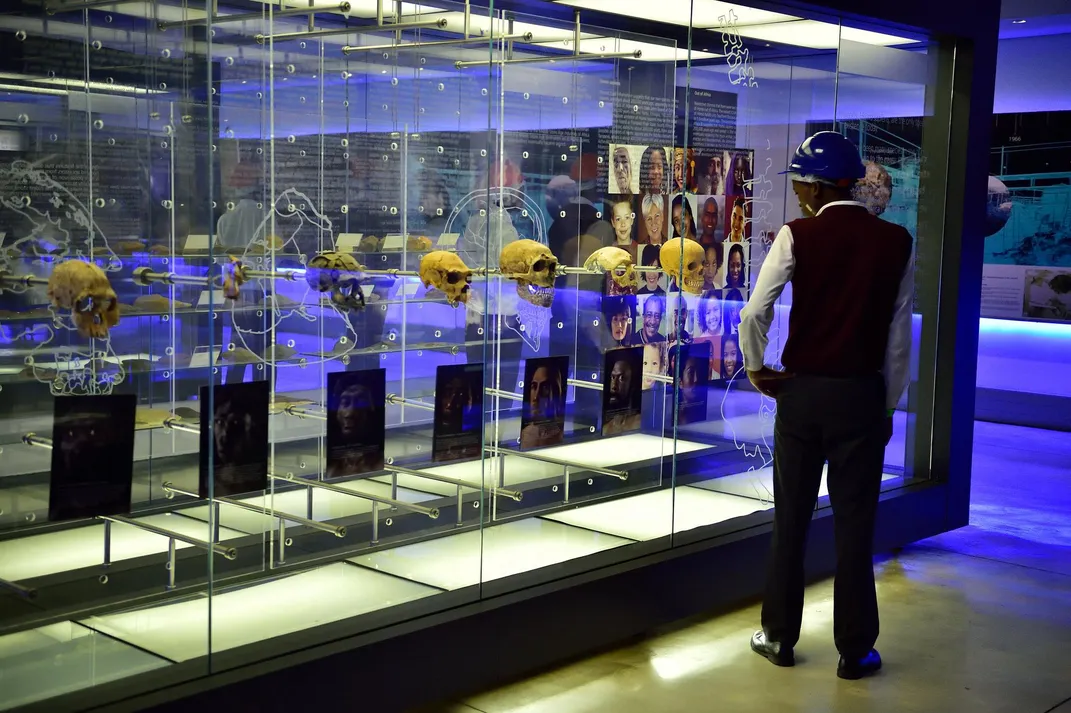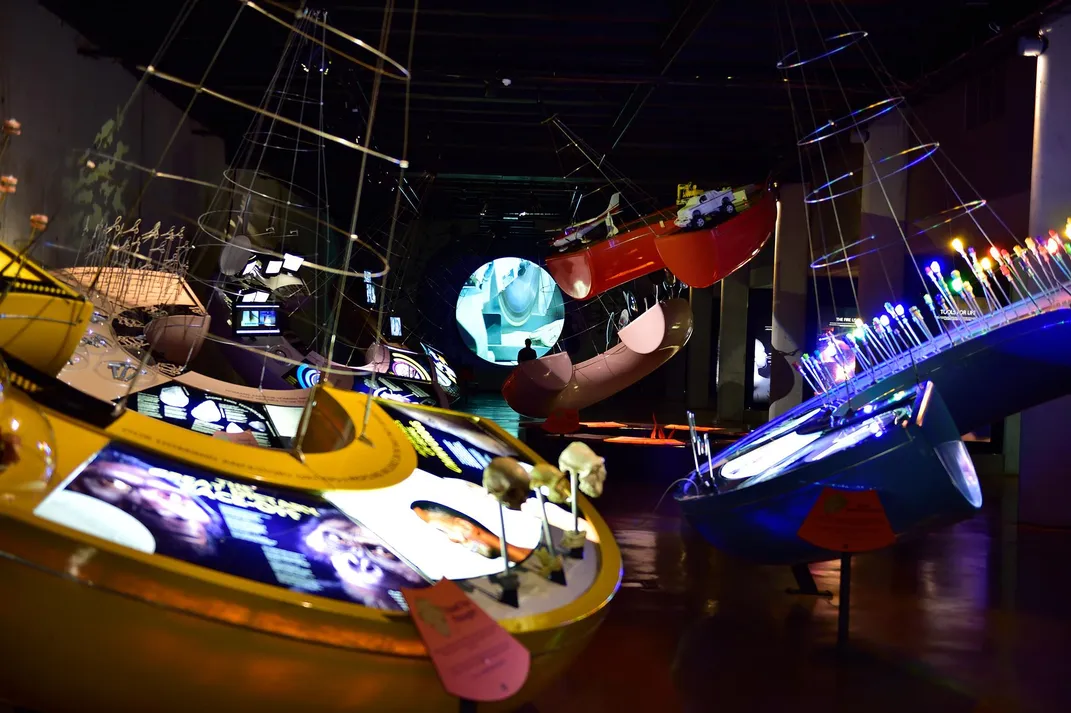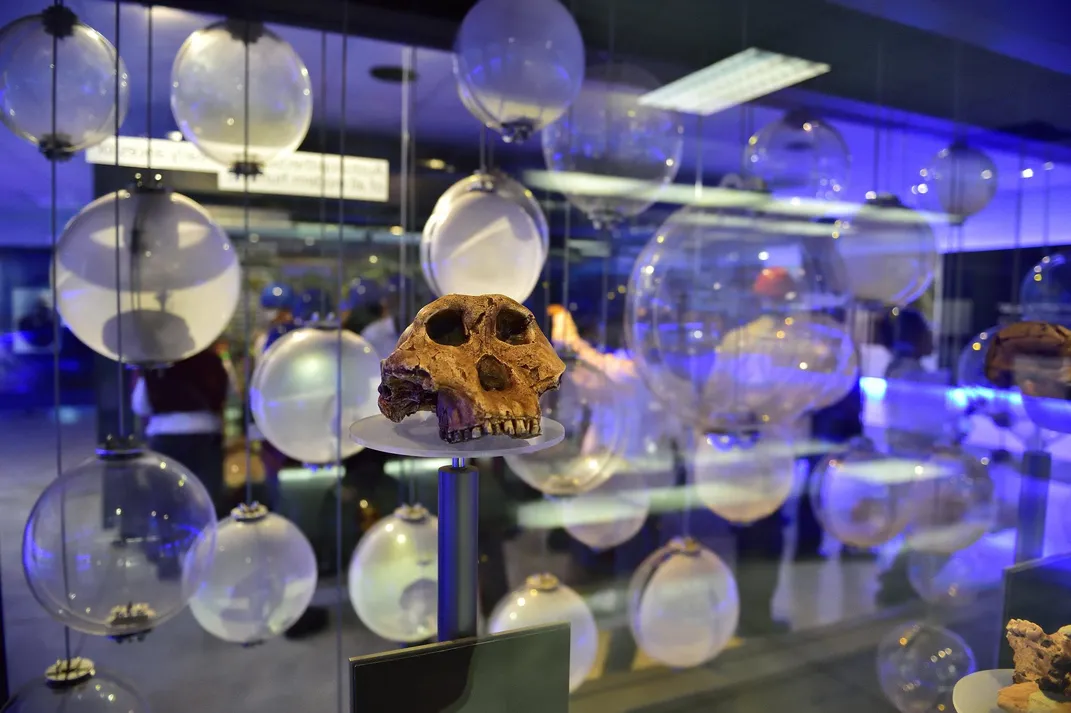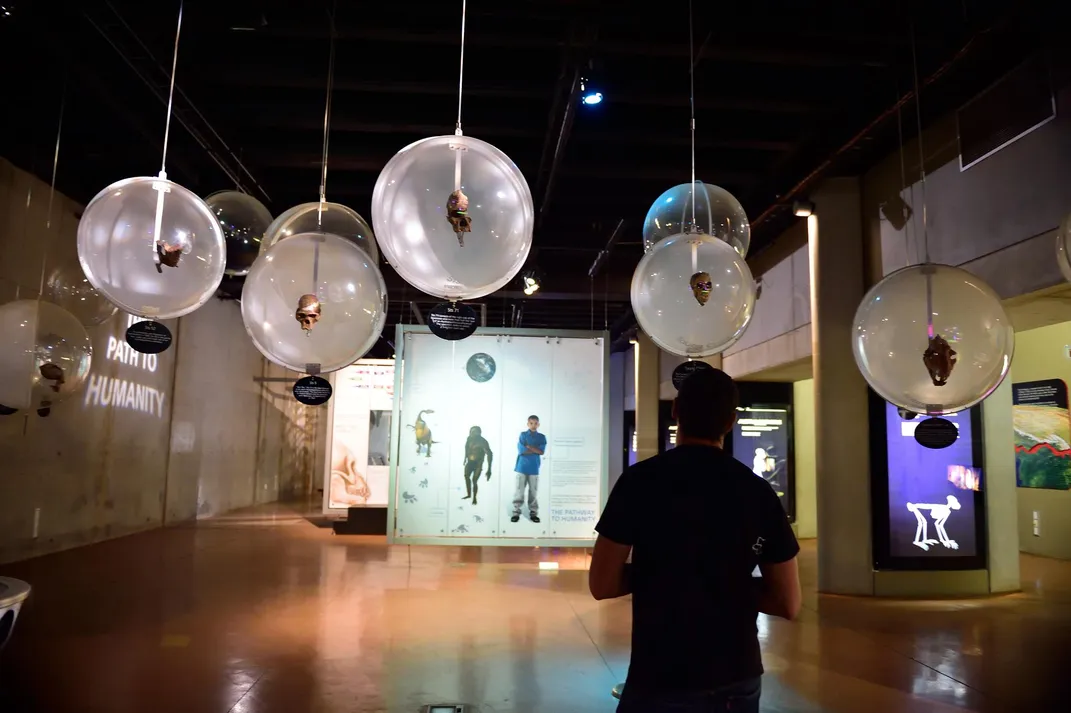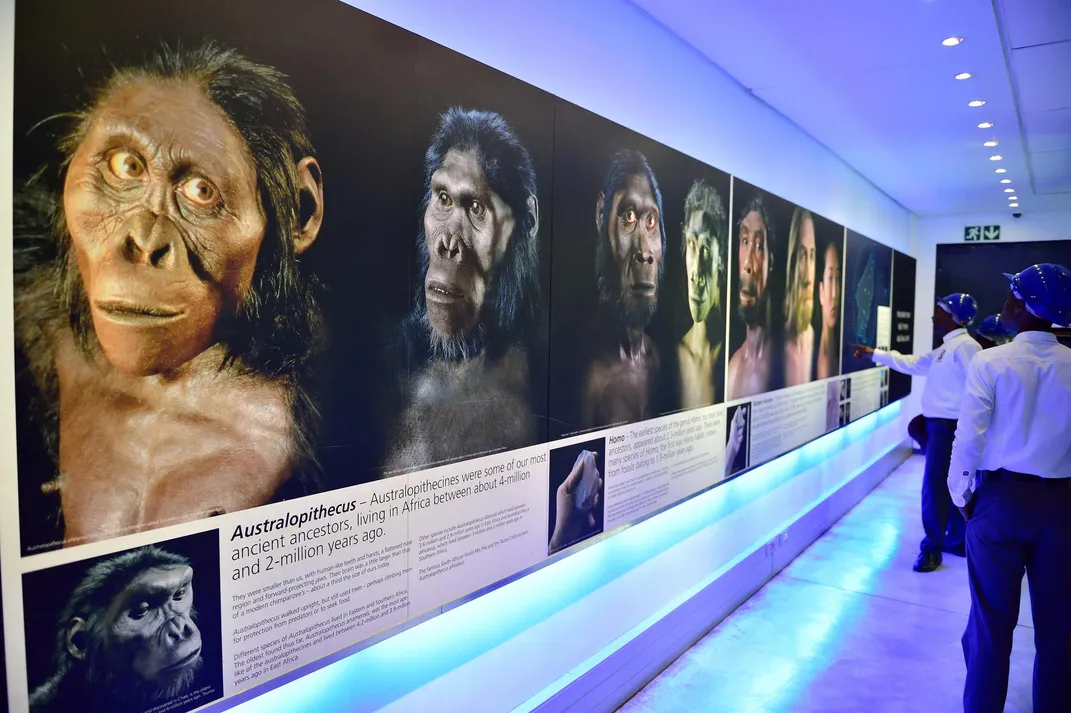Some 2.5 million years ago when saber-toothed cats roamed the rolling grasslands and rocky outcrops of modern-day Johannesburg, a young hominin strayed from its mother. Snatched up by an eagle, it fell into a network of subterranean limestone coves.
Fast forward to 1924. Paleontologist Raymond Dart, a professor at the University of Witwaterrand, was on his way to a wedding when he received two boxes from a quarry manager at Taung containing fossils. In them, he discovered the skull of what would become known as the “Taung Child.” Though the fossil exhibited apelike features, the position of the foramen magnum, or the opening that allows the spinal cord and brain to meet, convinced Dart that the child had walked upright like a human. He characterized the species Australopithecus africanus and touted it as a missing link between apes and humans, a claim that was met with much skepticism as it was widely believed that human race originated in Europe or Asia.
Two decades later, Scottish doctor and paleontologist Robert Broom and his assistant J.T. Robinson discovered the pelvis of an adult Taung Child in the nearby Sterkfontein Caves, confirming that Australopithecus africanus had indeed walked upright and placing Africa firmly on the map of early hominin hunters. Scientists began unearthing hundreds of hominin fossils in and around Taung and Sterkfontein, adding fuel to the theory that humans and their ancestors originated in Africa. In 1999, UNESCO declared the area a World Heritage site, referring to it as the “undisputed Cradle of Humankind.”
Fossils ranging from ancient cats to hominins as well as stone tools have been discovered in over a dozen major sites spanning 180 square miles, and the story of the Cradle is still unfolding. In September 2015, University of the Witwatersrand Professor Lee Berger revealed the discovery of Africa’s largest single collection of hominin fossils in the Rising Star cave system near Sterkfontein. In the chamber, accessed by a vertical chute that narrows to 7-inches wide, his team unearthed fossils from at least 15 individuals whose traits warranted a new species distinction: Homo naledi. Berger’s discovery has turned a spotlight back on the Cradle and its potential to expand our understanding of human evolution.
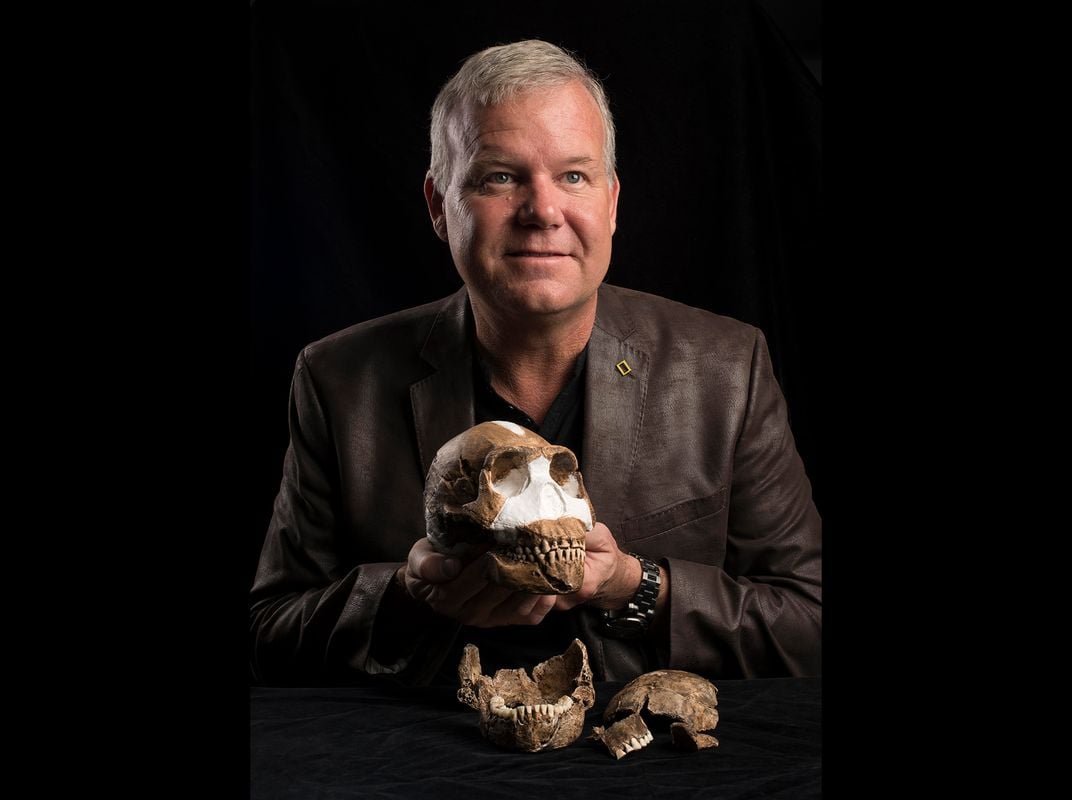
In addition to scientists and researchers, tens of thousands of visitors travel to the Cradle each year to learn about its unique history. Though many fossil sites are closed the public, there are several ways to explore this incredible region:
Sterkfontein Valley
Sterkfontein Valley, a short 45-minute drive from Johannesburg, is home to the Cradle's largest collection of fossil sites as well as its official visitor center. Located on the boundary of the Cradle, the Maropeng Visitor Center takes visitors on an evolutionary journey from the start of our universe, some 14-billion years ago, to the present.
Resembling an ancient burial mound known as a tumulus, Maropeng's entrance blends artfully with the grassland surroundings. Once inside, visitors are transported on boats across an artificial lake to an interactive exhibition. Displays tackle questions about how our brains developed, where language came from, when we first used fire and what the risks are for us as a species in the future. As many sites in the Sterkfontein Valley are not accessible without an appointment, the exhibit provides an overview of groundbreaking discoveries, such as when a schoolboy discovered a new species of hominin at Kromdraai.
Emerging from the back of the building, a striking view over rolling hills towards the Magaliesberg greets you. Glancing back, you will see the tumulus is now transformed into a futuristic building of glass and steel, a symbol of how far we’ve come as a species.
Maropeng's companion site is the world-famous Sterkfontein Caves. Among its highlight discoveries are "Mrs. Ples," the most complete skull of an Australopithecus africanus specimen ever discovered, and "Little Foot," an almost complete Australopithecus skeleton dating back about three million years. You can easily visit both the Sterkfontein Caves and Maropeng in a day, and the experiences complement one another. If you want to stay over in the area, there is a boutique hotel at Maropeng, and for a different perspective of the landscape, hot air ballooning and horse back riding are popular sightseeing options.
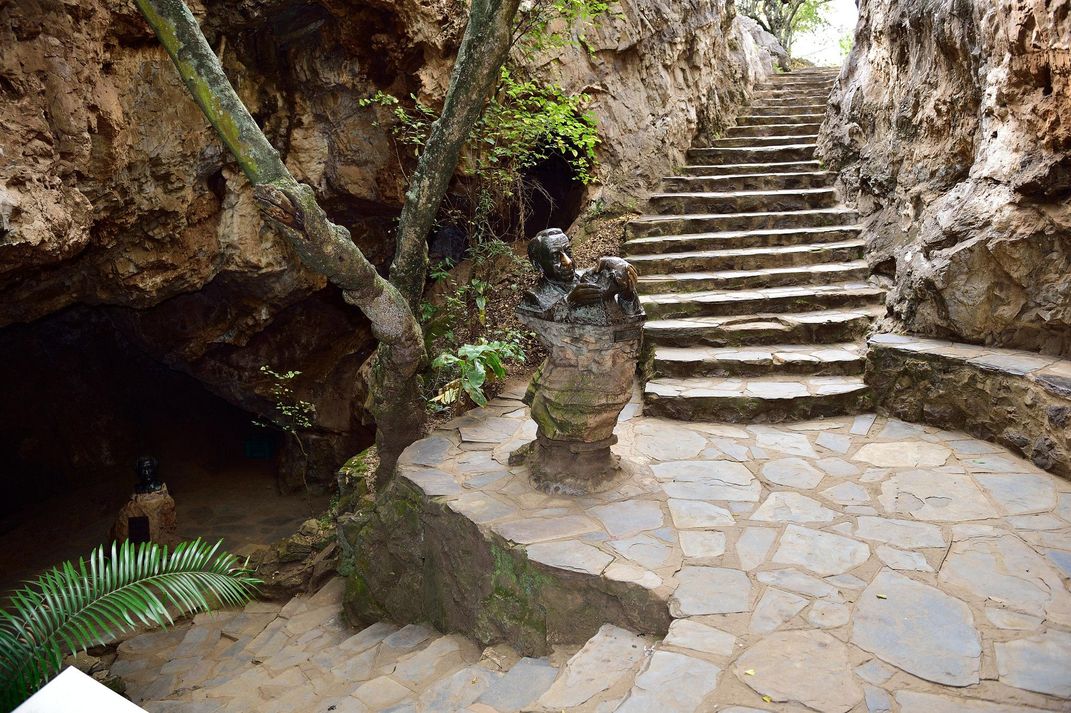
Taung Heritage Route
Located off the beaten path in the North West province, the Taung Heritage Route runs for 28 miles past the area where Buxton Limeworks miners extracted the 2.5-million-year-old Taung Child. A monument at the site details the fossil’s significance in furthering exploration of the surrounding region. Visitors can venture into an abandoned mine tunnel or enjoy lunch at one of several picnic tables.
The route also passes several natural wonders, such as a limestone waterfall and the Blue Pools, a collection of natural rock basins, streams and caves in a lush river valley. Visit in late September to enjoy an annual heritage celebration that involves completing the route with local archaeological experts. From Johannesburg, take the N14 to the N18 between Vryburg and Jan Kempdorp.
Makapan Valley
Northeast of Mokopane in the Limpopo province, Makapansgat is one of the greatest paleontological records of human evolution in the world. Once a marshy wetland, the site has yielded large quantities of ancient mammal and hominin fossils. From 1925 to 1947, following the discovery of the Taung Child, Dart systematically investigated the fossils at Makapansgat and identified and described several new Australopithecus africanus specimen. In 1947, the same year that Broom discovered Mrs. Ples, palaeontologist James Kitching unearthed more Australopithecus africanus fossils from the Cave of Hearths.
Today, tours run through three Makapan Valley caves, beginning with the limeworks where the hominin fossils were discovered. The Cave of Hearths exhibits evidence of the earliest controlled use of fire in Africa, and the Historic Cave reveals the tragic outcome of lingering hostilities between the Voortrekkers and local Ndebele tribes. Before visiting Makapansgat, tour the nearby Arend Dieperink Museum. The "Caves Through the Ages" exhibit depicts the life of early hominins and features archaeological and palaeontological material as well as historical artifacts discovered at the caves.
/https://tf-cmsv2-smithsonianmag-media.s3.amazonaws.com/filer/33/30/33309ede-c8bc-4f05-a142-bb2523f4370a/maropeng_1_960_472_80auto_s_c1_center_bottom.jpg)
